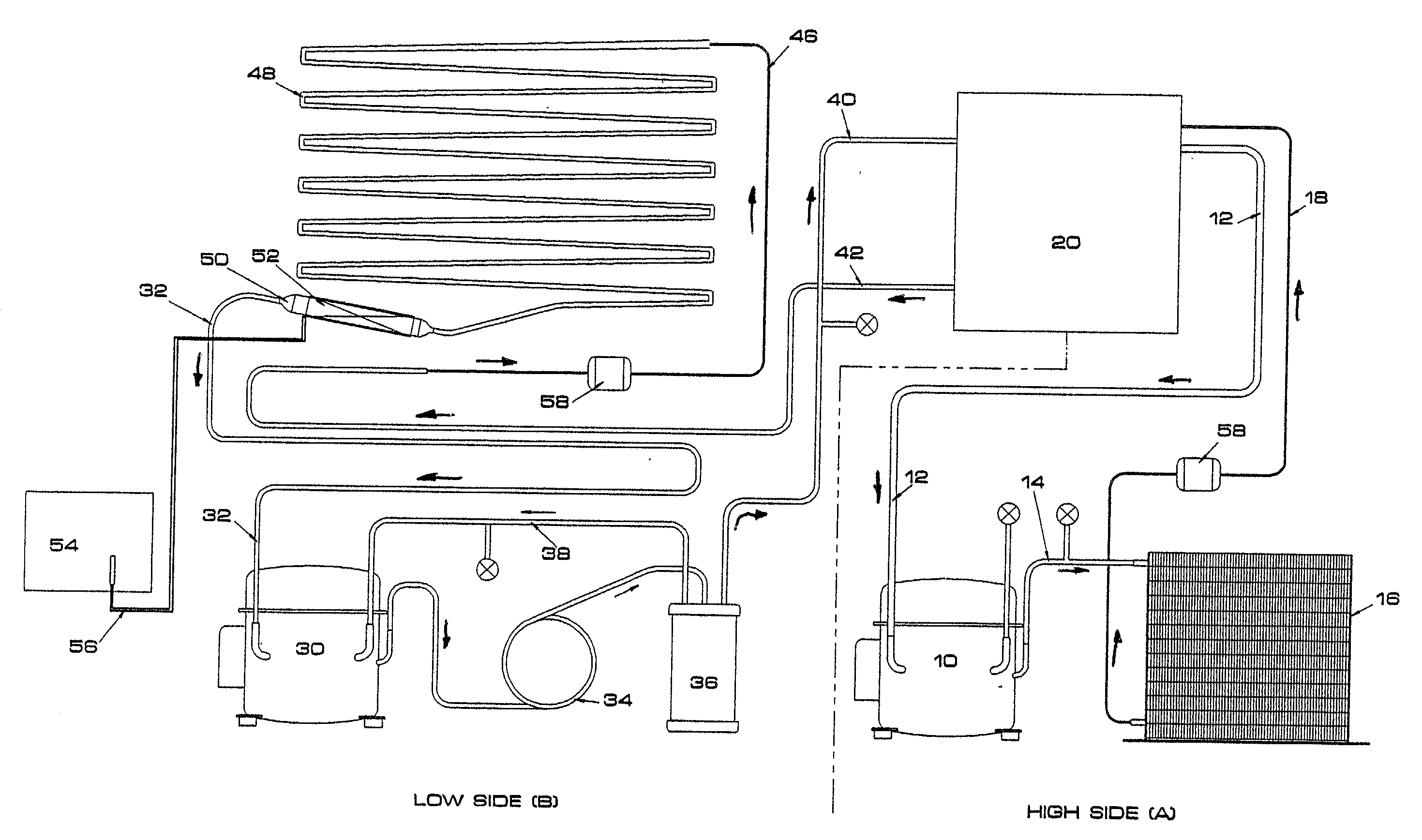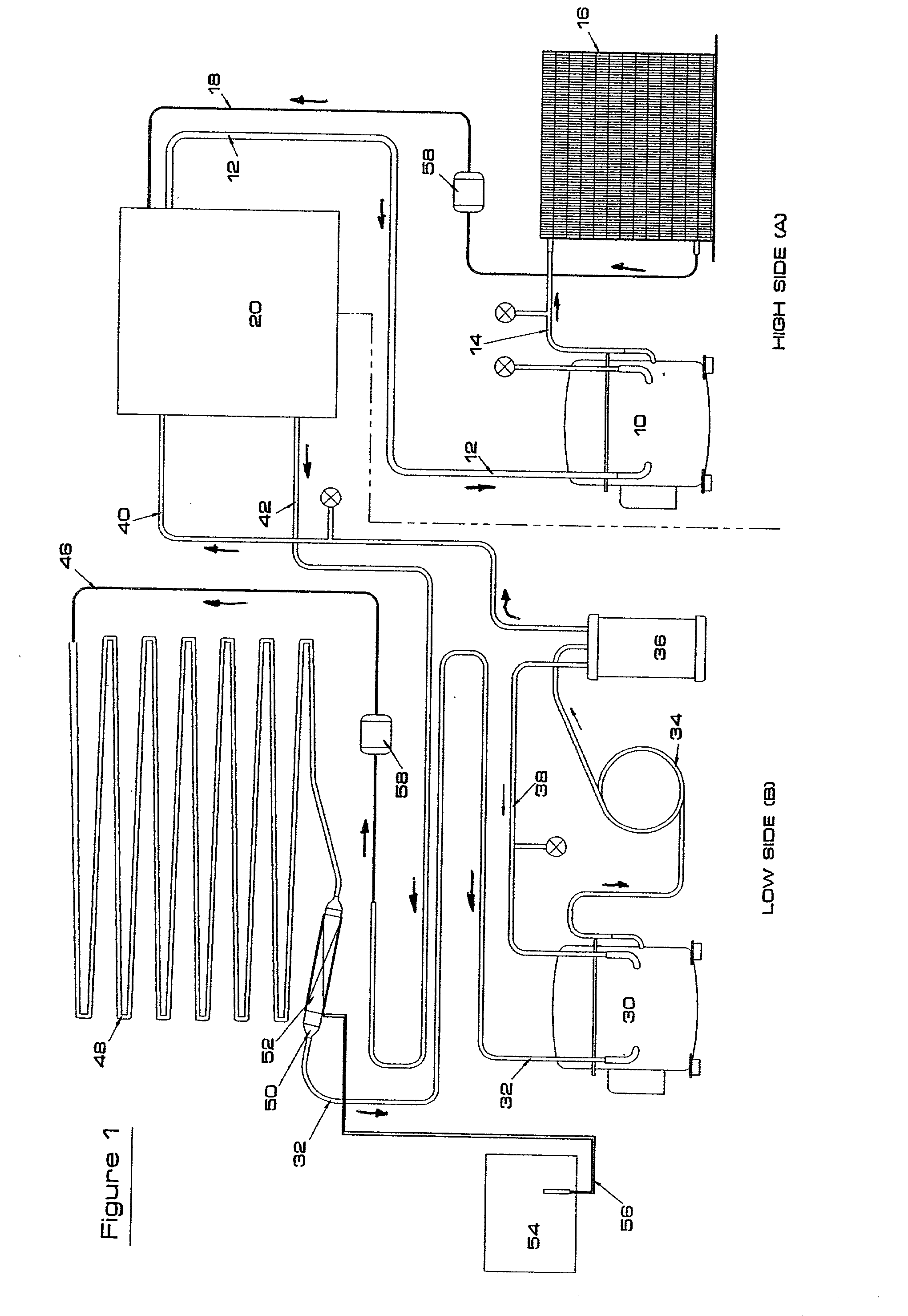Refrigeration systems
a technology of refrigeration system and charging system, which is applied in the direction of refrigeration components, fluid circulation arrangement, lighting and heating apparatus, etc., can solve the problems of inhibiting the operation of the evaporator, and achieve the effect of simplifying the charge system, avoiding the risk of damage to the goods stored, and ensuring the overall efficiency
- Summary
- Abstract
- Description
- Claims
- Application Information
AI Technical Summary
Benefits of technology
Problems solved by technology
Method used
Image
Examples
Embodiment Construction
[0021] The refrigeration system shown in FIG. 1 has two discrete cycles; one generally termed the high-side (labelled A), and the other generally termed the low-side (labelled B). During periods of on-time in normal operation, the low-side draws heat from the area to be cooled, and the high-side is adapted to cool the refrigerant of the low-side and dissipate that heat to the external environment. Separate refrigerants flow around the two cycles and whilst they thermally interact they do not come into direct contact. The types of refrigerant used are well know in the prior art so will not be discussed in detail. In FIG. 1 the direction of flow is indicated by arrows.
[0022] The high-side cycle comprises a compressor 10 which receives gaseous refrigerant from a return pipe 12. The compressor pressurises the gaseous refrigerant and pumps it out through a discharge pipe 14 into the condenser 16. In the condenser, heat energy is dissipated from the condensing refrigerant to the external ...
PUM
 Login to View More
Login to View More Abstract
Description
Claims
Application Information
 Login to View More
Login to View More - R&D
- Intellectual Property
- Life Sciences
- Materials
- Tech Scout
- Unparalleled Data Quality
- Higher Quality Content
- 60% Fewer Hallucinations
Browse by: Latest US Patents, China's latest patents, Technical Efficacy Thesaurus, Application Domain, Technology Topic, Popular Technical Reports.
© 2025 PatSnap. All rights reserved.Legal|Privacy policy|Modern Slavery Act Transparency Statement|Sitemap|About US| Contact US: help@patsnap.com


